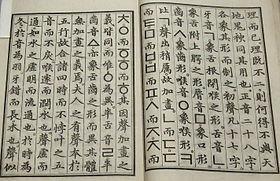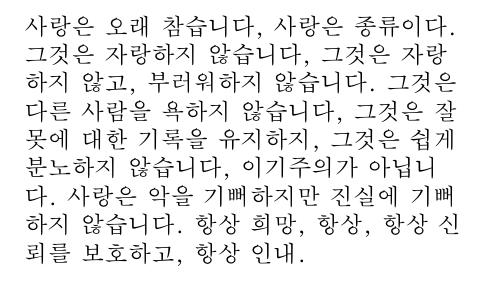

– How has the Korean language evolved over the centuries?
When was the Korean language created? The origins of the Korean language are a deeply fascinating subject intertwined with the culture and history of the Korean Peninsula. Understanding when the Korean language was created is essential for appreciating its evolution and significance in East Asian linguistics. This article delves into the history of the Korean language, its development over the centuries, and its current standing as a vital medium of communication among millions of speakers today.
Historical Overview of the Korean Language Origins
The formation of the Korean language is shrouded in mystery, predominantly due to the lack of comprehensive written records prior to the 15th century. However, linguists agree that Korean belongs to the Altaic language family, which includes languages spoken in parts of Siberia, Central Asia, and the Mongolian region. The following points summarize key historical stages in the evolution of the Korean language:
- Proto-Korean Era: This period is thought to have begun several thousand years ago, aligning with the migration of Korean tribes from regions of North China. Proto-Korean formed the basis of the language spoken by ancient Koreans, though no scripts have survived from this era.
- Goryeo Dynasty (918-1392): Korean culture and language began to flourish during the early medieval period. While written records largely utilized Classical Chinese characters, which were prevalent during this dynasty, the oral form of Korean evolved significantly.
- Lingo Mastery (Author)
- English (Publication Language)
- 289 Pages - 08/03/2020 (Publication Date) - Lingo Mastery (Publisher)
- [GENTLE YET POTENT CLEANSING OIL] Effective in eliminating makeup residue, blackheads and sebum, whilst preventing pore congestion. Essential step for double cleansing, with glowy glass skin results.
- [MILD INGREDIENTS ONLY] Formulated with Heartleaf extract for soothing effects on the skin
- [FOR ALL SKIN TYPES] Hypoallergenic & Non-Irritation Test completed, making it suitable for all skin types and especially Sensitive, Acne-Prone Skin.
- [GENTLE ON THE EYES] No eye stinging experiences when used around eyes, Eye Irritation Test (Cruelty Free HET-CAM Test) completed
- [HOW TO DOUBLE CLEANSE] ① Apply the cleansing oil to dry skin and gently massage for 1-2 minutes. ② Emulsify with water to effectively remove sebum. ③ Wash off all oil residues by using a water based cleanser.
- Hardcover Book
- Huh, Aaron (Author)
- English (Publication Language)
- 256 Pages - 12/20/2022 (Publication Date) - DK (Publisher)
- Creation of Hangul (1443-1446): The most significant and documented moment in the development of the Korean language occurred in the mid-15th century when King Sejong the Great commissioned the creation of Hangul, the phonetic alphabet that would represent the Korean language lifeforce. This period warrants further exploration.
Significance of Hangul in the Creation of Modern Korean
The establishment of Hangul marked a turning point in the accessibility of the Korean language to the general populace. Before Hangul, literacy in Korea was primarily confined to the elite who could read Classical Chinese. Let’s look further into the implications of this alphabet’s creation:
The Development of Hangul
- Motivation for Creation: King Sejong sought to improve literacy among commoners since the complex Chinese characters were daunting and often inaccessible. He envisioned an easy-to-learn script that would empower his people.
- Structure of Hangul: The design of Hangul is both systematic and logical. It consists of 14 basic consonants and 10 vowels. The characters can be combined into syllabic blocks, facilitating pronunciation and comprehension. This simple yet effective structure contributed to widespread literacy in Korea.
- The Legacy of Hangul: Since its introduction, Hangul has undergone enhancements, particularly during the Japanese occupation (1910-1945), which aimed to suppress Korean identity. The post-liberation era saw a revival and standardization of Hangul, further solidifying its role in Korean society.
Impact on the Korean Language
With the advent of Hangul, the Korean language experienced several transformative changes:
- Differentiation from Classical Chinese: Hangul allowed the Korean language to develop independently from Chinese influences, fostering a unique linguistic identity.
- Accessibility: Hangul’s straightforward system made reading and writing accessible to all citizens, leading to higher literacy rates and the ability to embrace Korean literature and folklore.
- Cultural Renaissance: The emergence of a written form encouraging more students, poets, and historians to document the Korean experience led to a cultural renaissance in the latter part of the 15th century.
Evolution of the Korean Language over Time
As we explore the timeline of the Korean language, it is essential to recognize that the language has not been static; it has evolved considerably through different historical events. Investigating how the Korean language has changed over the centuries includes examining relationships with neighboring nations and the impact of colonial rule.
- Lingo Mastery (Author)
- English (Publication Language)
- 289 Pages - 08/03/2020 (Publication Date) - Lingo Mastery (Publisher)
- [GENTLE YET POTENT CLEANSING OIL] Effective in eliminating makeup residue, blackheads and sebum, whilst preventing pore congestion. Essential step for double cleansing, with glowy glass skin results.
- [MILD INGREDIENTS ONLY] Formulated with Heartleaf extract for soothing effects on the skin
- [FOR ALL SKIN TYPES] Hypoallergenic & Non-Irritation Test completed, making it suitable for all skin types and especially Sensitive, Acne-Prone Skin.
- [GENTLE ON THE EYES] No eye stinging experiences when used around eyes, Eye Irritation Test (Cruelty Free HET-CAM Test) completed
- [HOW TO DOUBLE CLEANSE] ① Apply the cleansing oil to dry skin and gently massage for 1-2 minutes. ② Emulsify with water to effectively remove sebum. ③ Wash off all oil residues by using a water based cleanser.
- Hardcover Book
- Huh, Aaron (Author)
- English (Publication Language)
- 256 Pages - 12/20/2022 (Publication Date) - DK (Publisher)
Influence of Japanese Occupation
- Sociopolitical Impacts: The Japanese colonization brought about significant hardship and cultural oppression, leading to the suppression of the Korean language. Korean schools were closed, and the Japanese government promoted the use of Japanese both in public life and in education.
- Resistance through Language: Despite these pressures, Koreans developed a sense of identity embedded within their language. Underground efforts to preserve Korean literature during this time ultimately helped cultivate a nationalistic sentiment later on.
Post-Liberation Era
After Korea’s liberation in 1945, the Korean language saw a resurgence, contributing to a strong cultural identity among Koreans.
- Standardization Efforts: Various reforms and standardizations of hangul were implemented to purify the language from Japanese influences. This included eliminating borrowed Japanese words and re-enforcing native Korean vocabulary.
- Language Policy: The establishment of language academies like the National Institute of the Korean Language (NIKL) played a significant role in modernizing and standardizing the Korean language for formal education and communication.
Modern Korean: Variations and Dialects
Today, when we consider the question of when was the Korean language created, it is crucial to recognize that Korean is also characterized by its regional variations. These dialects may differ in pronunciation, vocabulary, and grammar, further enriching the language’s composition.
Major Dialects of the Korean Language
| Dialect | Region | Characteristics |
|———————|————————–|—————————————|
| Seoul Dialect | Capital city and surrounding areas | Forms the basis of modern standard language |
| Gyeonggi Dialect| Central Korea | Similar to Seoul, slight dialectical variations |
| Busan Dialect | Southeastern coast | Marks distinct phonetic differences |
| Jeju Dialect | Jeju Island | Contains unique vocabulary and grammar |
| North Korean Dialect| North Korea | Standardized differently from the South, with some lexical differences |
Conclusion: The Continuous Evolution of Korean Language
The question, “When was the Korean language created?” highlights a journey that encapsulates centuries of history, resilience, and cultural pride. From its roots in Proto-Korean to the refinements brought about by the creation of Hangul, the language continues to evolve in modern contexts. As globalization and technology redefine communication, Korean remains a vibrant and significant language with over 77 million speakers worldwide.
As we conclude this exploration, it is imperative to appreciate the depth and intricacies of the Korean language. It not only serves as a means of communication but also as a vessel of Korean identity and heritage. To learn more about the Korean language and its history, consider visiting reputable sources like National Institute of the Korean Language for additional resources.
Ultimately, the question of when the Korean language was created is layered and complex, characterized by a rich tapestry of historical contexts and cultural significance.





